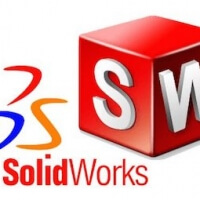Once again, SolidWorks has outdone its self (atleast in my opinion), with the introduction of their technical communication package, the SolidWorks Composer. From SolidWorks’ die hard enthusiasts to newbie and non-technical users, the market is spread wide, and SolidWorks has aimed for that entire lot with this package. Intuitive and concise, with a focus on simplicity through functionality, Composer allows the user to extract data (graphically, statistically etc.) from their SolidWorks’ 2D drawing/illustration and/or 3D design (other’s where formats are supported). Whatever you’ve drafted or designed, when it’s time to gather material for that C-suite presentation, Composer is the tool you turn to.
Eye Candy!
Starting off with its main functionality, the ability to extract 2D graphics from 3D designs for the user to incorporate into PowerPoint presentations and the like. The CAD data is directly translated into a 3D setup and is then adjusted to the user’s requirement before taking a snap shot of the part at the specific angle or under the circumstances. The resultant image comes out ready to be copied and pasted, literally. No further treatment is required, the tools for visual treatment are already included with the package, letting you take a shot at the final render. Following this, the package provides enough technical/statistical information for you to present your service or product, not only to the white collars, but also when marketing your product, handing out company portfolios and product catalogs, with technical details in place for those who know what they’re looking for. Moreover, the graphical functionality extends to animations and virtual walkthroughs with interactive & self-updating capabilities, all being updated as is the design. No more having to wait for a manufactured prototype to hold in your hand or to put in front of a hanging white bed sheet to take pictures of it with a smooth background so it can be photoshopped later. Do everything before, getting the final result, once and for all.
Lay man talk
Non-technical users will have a blast as this is one of the easiest and fundamentally basic features of the software, due to the nature of the work itself; documentation. A mundane task that almost every human being with a profession has to tend to, hence a certain level of engineering/CADing proves is not required when using this package. 2D and 3D designs and all kinds of photo manipulations allow you to produce photo-realistic images with the proper lighting. Any work in progress will automatically update when the main design itself gets updated, providing up-to-date information, visuals as well as accessories (walkthroughs). Interactive animations allow you to highlight parts and attach notes, so if a potential buyer is skimming through an online products catalog, they have the facility to review a summary of the product by clicking different parts and looking at only those details that matter. 2D line art is supported with multiple formats including SVG and CGM. High resolution raster images are also supported in BMP, JPEG, PNG, TIFF formats amongst others. From start of the design to the finished images all these functions help lower costs as opposed to having to build an actual model, prototype and then have it cataloged, photographed and so on and so forth. Not to mention the time it saves.
Let’s see, what else?
As this is all about documentation, the manufacturer/builder is also handsomely accommodated with technical data extraction procedures that allow the boss as well as the machine operator to look at the same report and see what’s worth seeing to each of them. The fact that most designs that need such a software to be documented are 3D, the product information cataloguing and product feature highlighting are supremely smooth to come by.
Leaving the graphics behind, the Composer has yet more to come. Design metadata is also forwarded such as part number and assembly cataloguing when dislodging the part to show its inner workings. The names of the parts as prescribed in the actual model, with notes and attachments can be added or left out as needed. Additional information can be appended to the extracted data and modifications and amendments are logged through-out so build changes can be tracked.
And last, but not least
Another neat trick with Composer that it has further extended functionality, going beyond the conventional documentation that Autodesk’s AutoCAD is also very popular for. BOM (Bill of Materials) generation is just another added plus to the package allowing you to generate and include the estimated bill of materials down to the last brick and layer of mortar.
Another thing, CATIA’s design are not only supported just as well as SolidWorks’ but virtually any DWG design (and others among the DW* series file formats) allowing a huge range of projects compatibility with the package.


